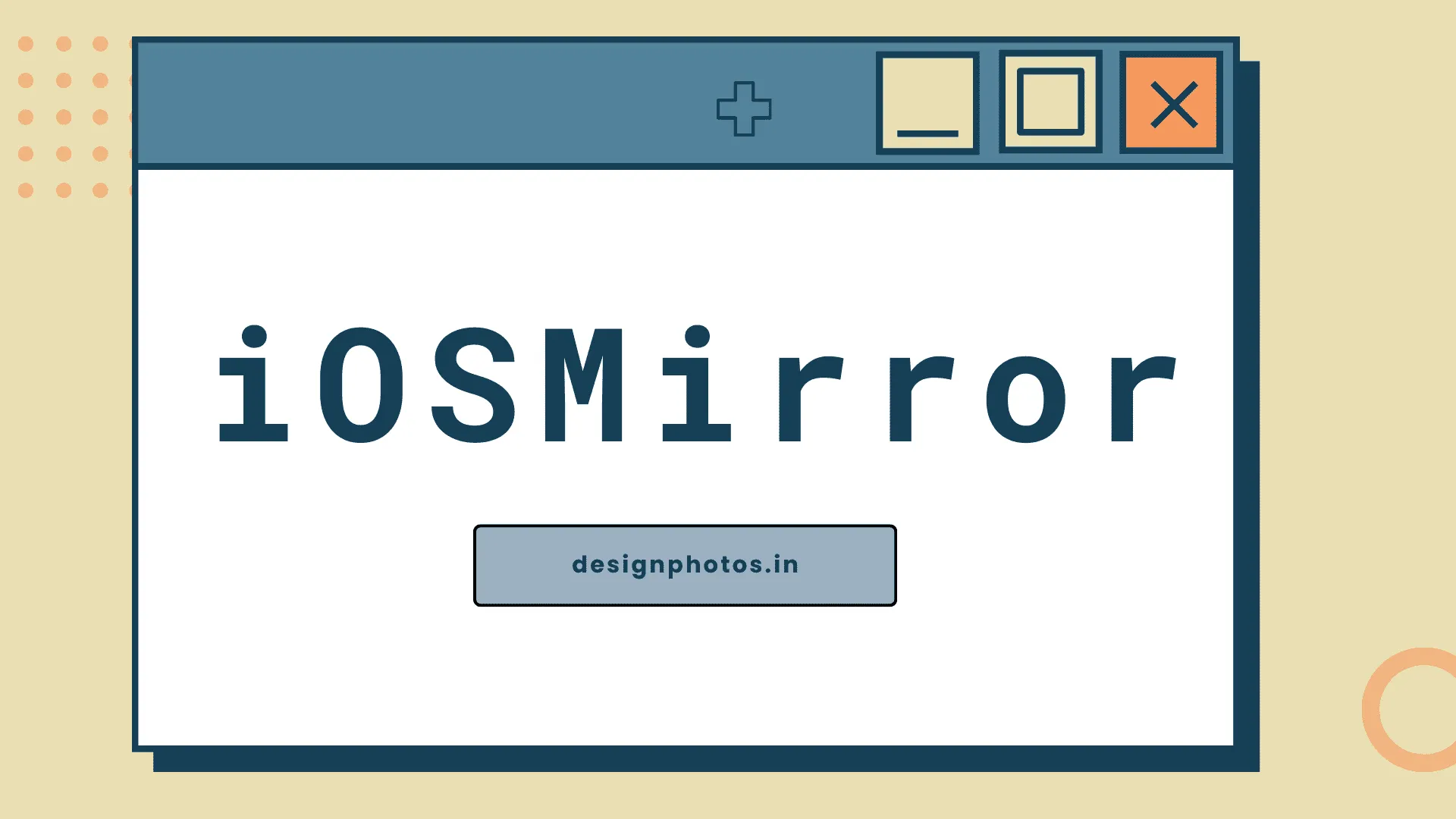iOSMirror is designed to provide a smooth, ad-free, and intuitive experience for streaming and screen mirroring on iPhone and iPad, bringing together content discovery, high-quality playback, and reliable mirroring in one place. The platform’s focus on iOS-first performance means it works with the grain of Apple’s ecosystem rather than against it, reducing friction that often plagues generic mirroring and streaming solutions. For users who want consistency, speed, and control without unnecessary interruptions, iOSMirror offers a focused and polished approach to entertainment and sharing.
Why iOSMirror Matters in an Overcrowded Streaming World
The modern media landscape is saturated with apps and platforms, each with their own ads, paywalls, interfaces, and quirks, which leads to fragmentation and friction for viewers. iOSMirror matters because it intentionally reduces those sources of frustration, prioritizing a single, cohesive experience that emphasizes playability, navigation speed, and user comfort. Instead of forcing constant app-switching and juggling of streaming methods, iOSMirror centralizes the journey from content discovery to playback and mirroring.
How iOSMirror Differs from Standard Mirroring and Casting
Traditional mirroring tools focus narrowly on duplication of the screen, while many streaming apps lock content into siloed interfaces with varying ad loads and controls. iOSMirror is different because it combines streaming capability with reliable mirroring while preserving a native iOS feel and minimizing intrusive elements. This approach makes routine activities—like starting a video on an iPhone and seamlessly continuing on an iPad or a TV—far more fluid, reducing the number of taps and settings needed to maintain momentum.
Also Read – Aiotechnical.com: Latest AI Trends, Tech Guides & Reviews
Key Features That Define iOSMirror
iOSMirror is built around an ad-free viewing experience, which is central to its quality promise and helps maintain immersion throughout long viewing sessions. The app’s interface is optimized for iOS gestures and standards, enabling intuitive scrubbing, clean overlays, fast search, and responsive controls that feel consistent across the system. Support for HD and higher resolutions where device and content permit ensures a sharp, detailed picture on Retina displays, while multi-language audio and subtitle options expand the catalog’s accessibility for diverse audiences.
The Role of Resume Playback and Watch History
Resume playback is essential for a modern streaming app because it enables seamless transitions between devices and contexts without losing the thread of a movie or series. iOSMirror’s watch history and progress syncing allow engagement to continue naturally, whether the viewer switches from a phone in transit to a tablet at home, or pauses to return later in the day. This continuity reduces cognitive load and keeps focus on the content, rather than on the mechanics of finding the last watched point.
The iOS-First Philosophy and Why It Matters
An iOS-first philosophy means aligning with system patterns that users already understand, which dramatically shortens the learning curve. By respecting iOS gestures, haptics, accessibility settings, and interface conventions, iOSMirror makes navigation feel immediate and natural. This translates to faster task completion, fewer errors, and a higher degree of comfort when using advanced features like casting, PiP, or on-the-fly subtitle adjustments.
Installing iOSMirror on iPhone and iPad
Installing iOSMirror should begin with confirming that the device is updated to a recent version of iOS or iPadOS for best compatibility, security, and performance. A clean install from the official source ensures the app remains free of tampering and avoids clones that could contain ads or unwanted code. After installation, first-time configuration typically involves setting language, enabling subtitle defaults, determining preferred video quality, and configuring whether to allow cellular playback or restrict to Wi‑Fi.
Initial Configuration and Permissions Best Practices
Upon first launch, iOSMirror may request permissions that are relevant for media playback, local network discovery for mirroring, and storage for caching. It is prudent to grant only permissions that make sense in the context of streaming and mirroring while declining anything unrelated to the core use case. Users who manage multiple devices should sign in if account-based syncing is offered, which enables watch history, bookmarks, and resume playback to travel across iPhone and iPad without manual intervention.
Setting Up Mirroring to TV and Projectors
Mirroring with iOSMirror generally requires both the iOS device and the receiving display to share the same Wi‑Fi network, which helps minimize latency and connection issues. To mirror, ensure the TV, streaming stick, or projector is in its screen mirroring or casting mode, then select it from Control Center on iOS or from in‑app options if available. For environments with older displays or inconsistent network conditions, a wired HDMI adapter serves as a robust fallback and reduces potential lag.
Optimizing Network and Device Performance for iOSMirror
Smooth playback is a function of device capability, available bandwidth, and network stability; a 5 GHz Wi‑Fi network often helps maintain high-bitrate streams with fewer interruptions. Closing extraneous background apps can free memory and CPU cycles, providing more headroom for decoding and interface responsiveness. Users who notice warming during extended HD or higher resolution sessions can keep devices cool by reducing brightness or removing thick cases, which may throttle performance.
Exploring Content Discovery within iOSMirror
A well-designed content discovery experience is the difference between aimless browsing and getting to excellent content quickly. iOSMirror’s discovery tools should be approached like a curated guide, with categories, search, and suggested lists used together to find matches for mood and time constraints. Leveraging watchlists and marking partially watched items keeps viewing orderly and prevents loss of context across multiple shows or films.
Using iOSMirror for Family Viewing
When sharing content with family, iOSMirror’s mirroring capability shines because it enables effortless big-screen playback without complex setup. Enabling or adjusting subtitles and audio language helps tailor the experience to different ages and preferences while making international content accessible. Household-friendly configurations like guided access on a phone or tablet prevent stray taps from disrupting playback, especially helpful when children are nearby.
Also Read – Maxxfour.com: A Deep Look at Its Pros, Cons & Safety
Presentations, Demos, and Workflows Beyond Entertainment
While iOSMirror’s name points to iOS, its value proposition extends beyond entertainment to productivity tasks like demonstrations, training, or quick app walkthroughs on larger screens. Locking orientation, dimming UI, and toggling dark mode can make on-screen content easier to follow in different lighting conditions. With stable mirroring, presenters can maintain a consistent frame and reduce awkward pauses caused by orientation shifts or layout changes.
Casual Gaming and Mirroring Considerations
Casual games that do not depend on ultra-low latency can be mirrored comfortably, though competitive or timing-critical titles are better left to native display or wired capture. Testing a game for responsiveness through iOSMirror before a longer session allows users to decide if mirroring is suitable. A Bluetooth controller can further improve the experience by freeing the screen from constant touch input, reducing occlusion and maintaining immersion.
Travel and Offline Strategies
Travel scenarios present unpredictable network environments, making preloading content, where supported, a valuable strategy for uninterrupted viewing. Hotels may have captive portals or limited casting compatibility, so carrying a compact HDMI adapter and a small streaming stick can provide greater control over the output path. Offline planning with iOSMirror turns potential connectivity challenges into smooth, predictable sessions that are resilient to spotty Wi‑Fi.
Troubleshooting Playback and Connectivity Issues
Playback hiccups often stem from bandwidth fluctuations or network congestion; switching to 5 GHz, moving closer to the router, or briefly lowering quality can restore smoothness. Audio problems during mirroring usually involve unintended routing to Bluetooth devices or muted outputs, solvable by checking Control Center and the TV’s settings. In the rare event of app instability, force‑quitting, updating, and reinstalling from the official source is a straightforward path to a clean, stable state.
Subtitle Accuracy and Readability in iOSMirror
Subtitles elevate comprehension and accessibility, but they must be legible in diverse lighting and across content with varying color palettes. iOSMirror’s subtitle styling options, when present, should be tailored for clarity by adjusting font size, background opacity, and contrast. For multi-language households, setting a default subtitle track reduces friction at the start of each playback session and ensures consistency in understanding.
Accessibility and Inclusive Design for iOSMirror Users
Respecting iOS-level accessibility settings is a hallmark of an iOS-first app and directly benefits users with diverse needs. Larger text, bold text, reduced motion, and increased contrast settings should be honored by the interface and video player overlays. By embracing these system preferences, iOSMirror improves comfort for extended viewing sessions and demonstrates inclusive design sensibilities.
Picture-in-Picture and Multitasking on iOS
Picture-in-Picture is a hallmark iOS feature that pairs well with the way many people consume content while multitasking. With iOSMirror, PiP allows continued viewing while referencing messages, notes, or browsing, keeping entertainment or instruction within reach without pausing. This flexibility can turn passive viewing into a more interactive, productive experience, especially during tutorials, workouts, or educational content.
Battery Care and Thermal Management During Streaming
Extended streaming sessions can draw significant power, especially at high brightness and higher bitrates. A balanced approach—lowering brightness slightly, using headphones instead of maxing out speakers, and avoiding hot environments—can extend battery life and preserve device health. For those streaming at home, connecting to power during long sessions keeps the device cool and ready for spontaneous use afterward.
Security, Privacy, and Responsible Use of iOSMirror
Security starts with sourcing: installing iOSMirror from official channels reduces exposure to tampered packages, hidden ads, or malicious trackers. Responsible permission management ensures the app only accesses what it needs to function, and users can periodically audit those permissions in iOS settings. When mirroring in public or shared environments, disabling previews or notifications prevents accidental leaks of private information during presentations or group viewing.
Ethical Considerations Around Content and Mirroring
Mirroring technology is powerful and should be used in accordance with applicable content rights and terms of service. iOSMirror’s capabilities should enable legitimate, respectful usage rather than circumventing fair access models. Respecting creators and distributors maintains a healthy content ecosystem and ensures continued availability of high-quality media.
Advanced Tips and Hidden iOSMirror Enhancements
Small conveniences add up in daily use, and iOSMirror benefits from subtle tweaks and habits. Customizing caption styles for common environments—bright rooms in the afternoon versus dim rooms at night—prevents constant fiddling and keeps focus on the story. Gesture familiarity, like double‑tapping to seek if supported, makes navigation faster than scrubbing and encourages more confident playback control.
Organizing Watchlists and Reducing Choice Overload
The paradox of choice can derail nightly viewing when the catalog is abundant and time is limited. A disciplined watchlist that is periodically pruned ensures that promising titles are visible and stale entries are removed. Employing a personal rule, like committing to two episodes before deciding to continue a series, helps strike a balance between exploration and completion.
How iOSMirror Fits Different Lifestyles and Routines
Fitness enthusiasts may use iOSMirror to mirror workout videos to a TV in a home gym, benefiting from large visuals and consistent audio cues. Students can follow lectures or language-learning material while taking notes in PiP, making productive use of short breaks. Families benefit from simplified mirroring to a living-room display without complicated device pairings or additional logins that derail family time.
Comparing iOSMirror with AirPlay and Other Cast Protocols
While AirPlay is a robust Apple protocol for mirroring and casting, it is typically app-agnostic and leaves content discovery and playback features to individual apps. iOSMirror addresses the broader journey by coupling discovery-friendly design with a stable player and practical mirroring pathways. This complementarity means iOSMirror can serve as a one-stop environment while still cooperating with underlying system protocols.
Sustaining Performance with Regular Updates
Updates are essential to refine codecs, improve compatibility with new iOS versions, and fix issues discovered in the wild. Keeping iOSMirror updated ensures the best experience and closes any vulnerabilities that may have been discovered since the last release. Regular updates also signal active support, which fosters trust in the platform’s long-term viability.
Using iOSMirror for Education and Skill Building
Educational content benefits from clear subtitles, variable playback controls, and smooth seeking to revisit complex segments. iOSMirror supports a learning workflow where lessons can be mirrored for group study or kept on-device for focused, portable review. Consistent playback quality and reliable resume features minimize friction so that cognitive effort is spent on comprehension rather than technical setup.
Integrating iOSMirror into a Smart Home Setup
In a smart home, iOSMirror can be part of a broader media flow that includes smart TVs, receivers, and speakers. Ensuring all devices share a stable network and consistent naming conventions reduces confusion during device selection. As routines form, starting playback on a phone and continuing on a TV becomes second nature, enhancing the feeling of a unified media environment.
Conclusion: Why iOSMirror Delivers Lasting Value
iOSMirror stands out by focusing on the essentials that matter to everyday viewing: clean design, ad-free playback, consistent mirroring, and a native iOS feel. It simplifies the pathway from discovery to enjoyment, preserving momentum and minimizing distractions across devices and contexts. For users seeking a reliable, well-integrated environment for streaming and sharing, iOSMirror represents a thoughtful, future-ready choice that aligns tightly with the strengths of the iOS ecosystem.
Frequently Asked Questions About iOSMirror
When iOSMirror Is the Right Choice
iOSMirror is ideal for users who value streamlined viewing, minimal interruptions, and a consistent experience across iPhone and iPad. It is well-suited to households looking for quick mirroring to a shared screen, as well as individuals who want a dependable player with intuitive controls. If current viewing habits feel fragmented or cluttered by ads and uneven interfaces, iOSMirror offers a refreshing alternative.
When to Consider Alternatives or Complements
Some specialized use cases—like ultra-low-latency competitive gaming—may be better served by wired solutions or native playback. Similarly, niche media workflows might rely on apps optimized for a particular service or file format beyond typical streaming. In such cases, iOSMirror can still coexist as a general-purpose solution while specific tools handle edge scenarios.
The Future of iOSMirror in a Changing Media Landscape
As iOS continues to evolve, the bar for seamless performance, power efficiency, and security rises, and iOSMirror should track these changes closely. Advancements in codecs, network protocols, and hardware acceleration will further reduce latency and improve video quality. A continued commitment to user-centric design, inclusive features, and strong privacy practices will keep iOSMirror competitive and trustworthy.



